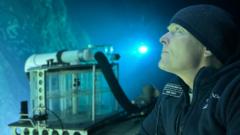Lochridge had joined OceanGate with hopes and excitement, moving from Scotland to the US to help design the innovative Titan submersible, which was to carry paying passengers to the Titanic. With 25 years of experience, he was initially optimistic about the project, but doubts arose as the design process shifted from the University of Washington to in-house engineering and as critical safety measures were neglected.
Lochridge noted numerous issues with Titan's construction, including visible gaps in the carbon fibre hull and improper machining of titanium components. He advocated for critical third-party safety assessments but was dismissed and ultimately fired when he raised his concerns. Following his termination, Lochridge reported to the Occupational Safety and Health Administration (OSHA), seeking whistleblower protection. However, he faced retaliation and legal battles, exacerbated by OSHA's slow response.
A US Coast Guard report published after the fatal incident acknowledged Lochridge's foresight and criticized both OceanGate's practices and OSHA's oversight failures.lochRidge emphasized that the tragedy was preventable, lamenting missed opportunities for intervention. "Nothing needed to happen; it could have been stopped," he asserted.
In the aftermath, OceanGate has ceased operations and expressed commitment to cooperating with ongoing investigations, but Lochridge's accusations underscore a deeper issue of regulatory inadequacy and corporate accountability in ensuring public safety in high-risk ventures.
Lochridge noted numerous issues with Titan's construction, including visible gaps in the carbon fibre hull and improper machining of titanium components. He advocated for critical third-party safety assessments but was dismissed and ultimately fired when he raised his concerns. Following his termination, Lochridge reported to the Occupational Safety and Health Administration (OSHA), seeking whistleblower protection. However, he faced retaliation and legal battles, exacerbated by OSHA's slow response.
A US Coast Guard report published after the fatal incident acknowledged Lochridge's foresight and criticized both OceanGate's practices and OSHA's oversight failures.lochRidge emphasized that the tragedy was preventable, lamenting missed opportunities for intervention. "Nothing needed to happen; it could have been stopped," he asserted.
In the aftermath, OceanGate has ceased operations and expressed commitment to cooperating with ongoing investigations, but Lochridge's accusations underscore a deeper issue of regulatory inadequacy and corporate accountability in ensuring public safety in high-risk ventures.






















